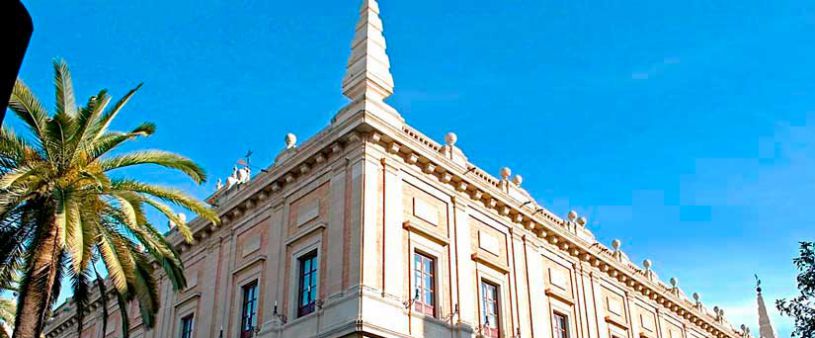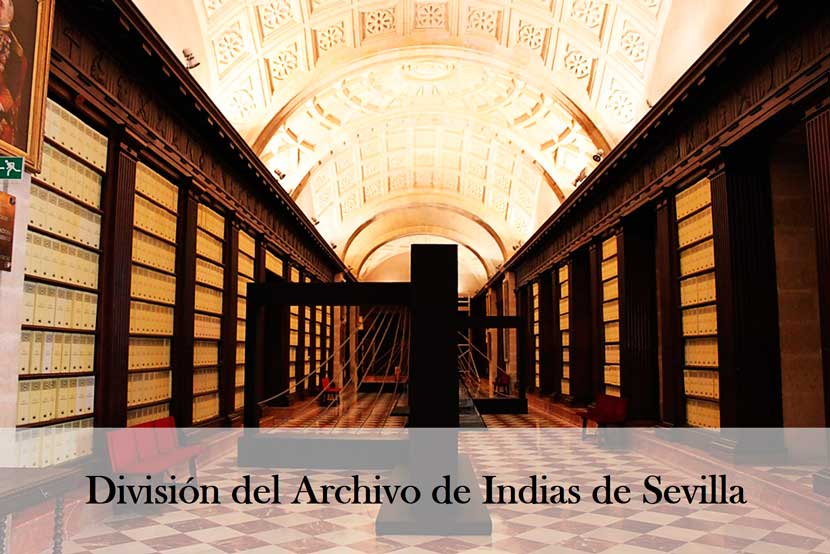 Archive of the Indies of Seville
Archive of the Indies of Seville
The Archive of the Indies of Seville was designed under the instructions and wishes of King Carlos III. This king wanted to create a place where all the necessary information on the administration of the Spanish colony could be located. At that time, this information was divided into different file centers such as: Simancas, Seville and Cadiz.
The Archive of the Indies of Seville is an emblematic building, that commemorates all the great trade that existed with India and America. To know more about the history of this emblematic building, we invite you to continue reading this article.
History of the Archive of the Indies of Seville.
The Archive of the Indies of Seville was created for two important reasons: First, in the General Archive of Simancas and in the Central Archives of the Crown, there was not enough space. Second, we wanted to devise documentation that was recorded to record the history of Spanish colonization.
For these two powerful reasons in the year 1785 it was carried out the construction of the emblematic building Archive of the Indies of Seville. These days it is the file with more authenticity of the Spanish activities. In this file you will find more than 43,000 files among which there are manuscripts of Cristóbal Colón, Fernando Magallanes, among others. Besides 8.000 maps and planes that include more than 9 kilometres of linear
The appearance of this building is of a Renaissance Herreriano style, which is built on a square floor podium. It is on two floors and is characterized by its red bricks and stone elements. In 1999 until 2005 a project was carried out in which many of the facilities of the emblematic Archive of India of Seville were recovered and updated.
How is the Archive of the Indies of Seville divided?

In the Archive of the Indies of Seville, the documentation was organized in 16 sections:
- Royal Patronage: In this section you will find all documents related to the ecclesiastical rights of the crown.
- Accounting: All accounting documents, which contained records of the amounts sent to Spain from 1514 to 1782.
- Contracting: In this section are archived the files, which record the different recruitment houses. All information regarding trade between Spain and America.
- Justice: The documents that were generated by the Supreme Court of Justice with respect to Indian affairs. From the year 1515-1615.
- Government: There are 18,714 documents which correspond to the Government of the Council of India.
- Clerk’s office: Since 1571 the documents in which the office of Notary of the Chamber of Justice was established.
- Arrivals: From 1647-1822, all the files relating to the Commissary Interventor of the Public Treasury and the Secretariat of the Court were documented and kept.
- Post office: Any document that arrives from the Ministry of Overseas Affairs and general management is duly archived in this section.
- Status: The files that record all the activities that have been carried out abroad since 1683-19860.
- Overseas: In this section you’ll find all documents containing the latest Indian Councils, the Secretary of State and the different Ministries in charge of the Overseas Administration.
- Cuba: The files that reflect the information of the Captaincy General from the disintegration of the empire. From 1712-1877.
- Consulate: Documentation of overseas activity with India. The consulates are: Seville and Cadiz.
- Titles of Castilla: Any document that contains information regarding the different noble titles are archived in this section.
- Court of Accounts: Documents containing an account record between Cuba and Puerto Rico. From 1853-1893.
- Miscellaneous: Diversity of documents comprising from 1758 to 1821.
- Maps and plans: maps, leaflets, plans, fabrics, design, all these are documents, which, because they are so delicate, need special care.
This emblematic Archive of the Indies of Seville is located on Av. De la Constitución, very close to the Alcázar and the Cathedral. It is open to the public, from Monday to Friday from 8:00 am to 3:00 pm and on Saturdays and Sundays different exhibitions are held. Admission is free.


0 comments in Archive of the Indies of Seville
No one has commented yet! Be the first to do it!